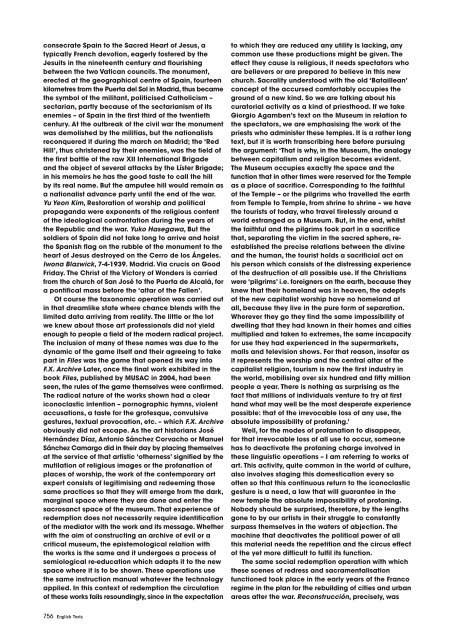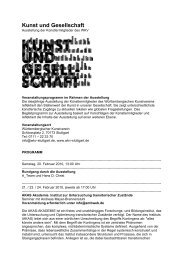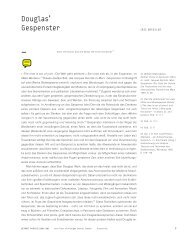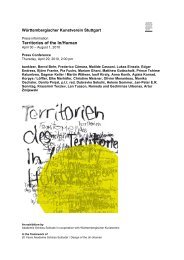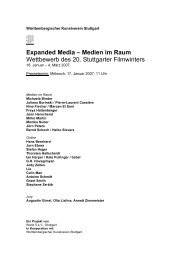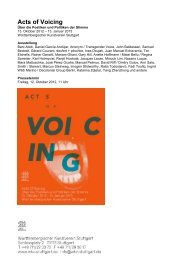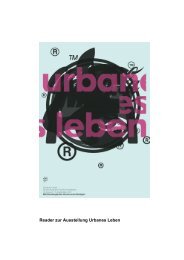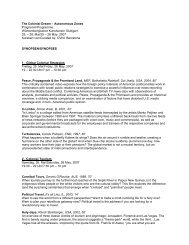English Texts
English Texts
English Texts
Create successful ePaper yourself
Turn your PDF publications into a flip-book with our unique Google optimized e-Paper software.
consecrate Spain to the Sacred Heart of Jesus, a<br />
typically French devotion, eagerly fostered by the<br />
Jesuits in the nineteenth century and flourishing<br />
between the two Vatican councils. The monument,<br />
erected at the geographical centre of Spain, fourteen<br />
kilometres from the Puerta del Sol in Madrid, thus became<br />
the symbol of the militant, politicised Catholicism –<br />
sectarian, partly because of the sectarianism of its<br />
enemies – of Spain in the first third of the twentieth<br />
century. At the outbreak of the civil war the monument<br />
was demolished by the militias, but the nationalists<br />
reconquered it during the march on Madrid; the ‘Red<br />
Hill’, thus christened by their enemies, was the field of<br />
the first battle of the raw XII International Brigade<br />
and the object of several attacks by the Líster Brigade;<br />
in his memoirs he has the good taste to call the hill<br />
by its real name. But the amputee hill would remain as<br />
a nationalist advance party until the end of the war.<br />
Yu Yeon Kim, Restoration of worship and political<br />
propaganda were exponents of the religious content<br />
of the ideological confrontation during the years of<br />
the Republic and the war. Yuko Hasegawa, But the<br />
soldiers of Spain did not take long to arrive and hoist<br />
the Spanish flag on the rubble of the monument to the<br />
heart of Jesus destroyed on the Cerro de los Ángeles.<br />
Iwona Blazwick, 7-4-1939. Madrid. Via crucis on Good<br />
Friday. The Christ of the Victory of Wonders is carried<br />
from the church of San José to the Puerta de Alcalá, for<br />
a pontifical mass before the ‘altar of the Fallen’.<br />
Of course the taxonomic operation was carried out<br />
in that dreamlike state where chance blends with the<br />
limited data arriving from reality. The little or the lot<br />
we knew about those art professionals did not yield<br />
enough to people a field of the modern radical project.<br />
The inclusion of many of these names was due to the<br />
dynamic of the game itself and their agreeing to take<br />
part in Files was the game that opened its way into<br />
F.X. Archive Later, once the final work exhibited in the<br />
book Files, published by MUSAC in 2004, had been<br />
seen, the rules of the game themselves were confirmed.<br />
The radical nature of the works shown had a clear<br />
iconoclastic intention – pornographic hymns, violent<br />
accusations, a taste for the grotesque, convulsive<br />
gestures, textual provocation, etc. – which F.X. Archive<br />
obviously did not escape. As the art historians José<br />
Hernández Díaz, Antonio Sánchez Corvacho or Manuel<br />
Sánchez Camargo did in their day by placing themselves<br />
at the service of that artistic ‘otherness’ signified by the<br />
mutilation of religious images or the profanation of<br />
places of worship, the work of the contemporary art<br />
expert consists of legitimising and redeeming those<br />
same practices so that they will emerge from the dark,<br />
marginal space where they are done and enter the<br />
sacrosanct space of the museum. That experience of<br />
redemption does not necessarily require identification<br />
of the mediator with the work and its message. Whether<br />
with the aim of constructing an archive of evil or a<br />
critical museum, the epistemological relation with<br />
the works is the same and it undergoes a process of<br />
semiological re-education which adapts it to the new<br />
space where it is to be shown. These operations use<br />
the same instruction manual whatever the technology<br />
applied. In this context of redemption the circulation<br />
of these works fails resoundingly, since in the expectation<br />
to which they are reduced any utility is lacking, any<br />
common use these productions might be given. The<br />
effect they cause is religious, it needs spectators who<br />
are believers or are prepared to believe in this new<br />
church. Sacrality understood with the old ‘Bataillean’<br />
concept of the accursed comfortably occupies the<br />
ground of a new kind. So we are talking about his<br />
curatorial activity as a kind of priesthood. If we take<br />
Giorgio Agamben’s text on the Museum in relation to<br />
the spectators, we are emphasising the work of the<br />
priests who administer these temples. It is a rather long<br />
text, but it is worth transcribing here before pursuing<br />
the argument: ‘That is why, in the Museum, the analogy<br />
between capitalism and religion becomes evident.<br />
The Museum occupies exactly the space and the<br />
function that in other times were reserved for the Temple<br />
as a place of sacrifice. Corresponding to the faithful<br />
of the Temple – or the pilgrims who travelled the earth<br />
from Temple to Temple, from shrine to shrine – we have<br />
the tourists of today, who travel tirelessly around a<br />
world estranged as a Museum. But, in the end, whilst<br />
the faithful and the pilgrims took part in a sacrifice<br />
that, separating the victim in the sacred sphere, reestablished<br />
the precise relations between the divine<br />
and the human, the tourist holds a sacrificial act on<br />
his person which consists of the distressing experience<br />
of the destruction of all possible use. If the Christians<br />
were ‘pilgrims’ i.e. foreigners on the earth, because they<br />
knew that their homeland was in heaven, the adepts<br />
of the new capitalist worship have no homeland at<br />
all, because they live in the pure form of separation.<br />
Wherever they go they find the same impossibility of<br />
dwelling that they had known in their homes and cities<br />
multiplied and taken to extremes, the same incapacity<br />
for use they had experienced in the supermarkets,<br />
malls and television shows. For that reason, insofar as<br />
it represents the worship and the central altar of the<br />
capitalist religion, tourism is now the first industry in<br />
the world, mobilising over six hundred and fifty million<br />
people a year. There is nothing as surprising as the<br />
fact that millions of individuals venture to try at first<br />
hand what may well be the most desperate experience<br />
possible: that of the irrevocable loss of any use, the<br />
absolute impossibility of profaning.’<br />
Well, for the modes of profanation to disappear,<br />
for that irrevocable loss of all use to occur, someone<br />
has to deactivate the profaning charge involved in<br />
these linguistic operations – I am referring to works of<br />
art. This activity, quite common in the world of culture,<br />
also involves staging this domestication every so<br />
often so that this continuous return to the iconoclastic<br />
gesture is a need, a law that will guarantee in the<br />
new temple the absolute impossibility of profaning.<br />
Nobody should be surprised, therefore, by the lengths<br />
gone to by our artists in their struggle to constantly<br />
surpass themselves in the waters of abjection. The<br />
machine that deactivates the political power of all<br />
this material needs the repetition and the circus effect<br />
of the yet more difficult to fulfil its function.<br />
The same social redemption operation with which<br />
these scenes of redress and sacramentalisation<br />
functioned took place in the early years of the Franco<br />
regime in the plan for the rebuilding of cities and urban<br />
areas after the war. Reconstrucción, precisely, was<br />
756 <strong>English</strong> <strong>Texts</strong>


